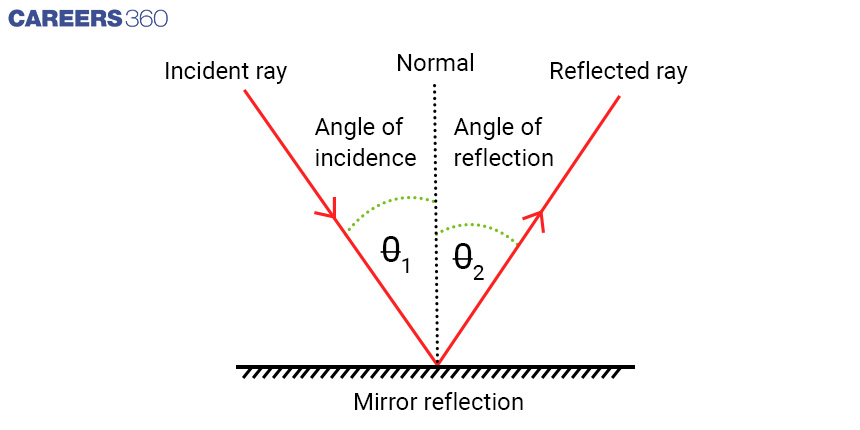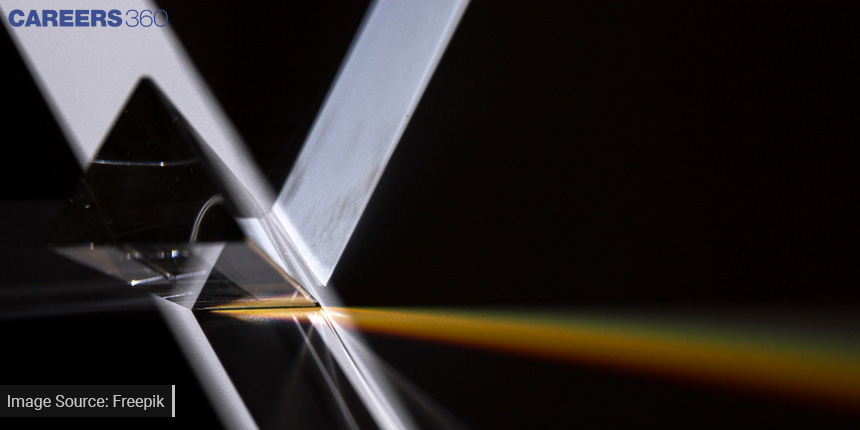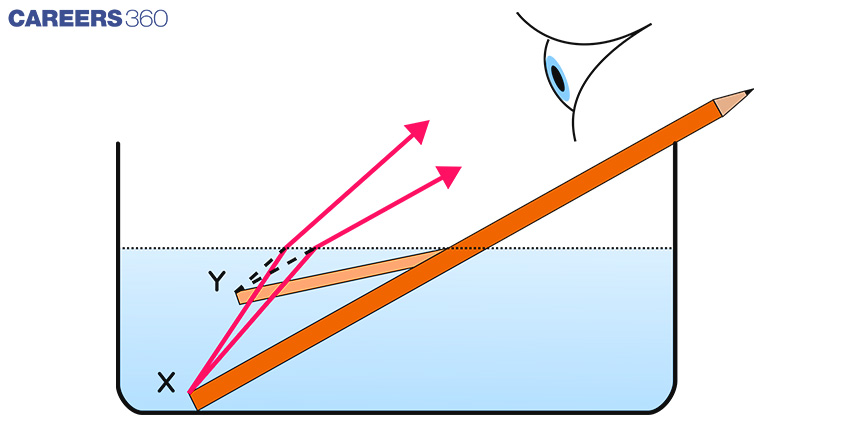Class 10 Refraction: Why Do Objects Appear Bent In Water?
Have you ever noticed how a straight object, like a pencil or a straw, seems to bend when you put it in a glass of water? It might seem like magic, but it's actually a fascinating phenomenon called refraction. Refraction is like a magical dance between light and matter, where the path of light bends as it moves from one material to another.
This Story also Contains
- Refraction Phenomenon
- Experiment: Refraction of Light
- Refraction of Light in Water
- Why Objects Appear Bent in Water

In this story, we'll explore the secrets of refraction and learn why objects look bent when placed in water. Get ready to uncover the mysteries of light and discover the science behind this intriguing optical illusion!
Refraction Phenomenon
When light travels from one medium (such as air) to another (such as water or glass), its direction changes. This change in direction is governed by Snell's law, named after the Dutch scientist Willebrord Snell. The law states that for a given set of media, the ratio of the sine of the angle of incidence (the angle between the incident ray and the normal line) to the sine of the angle of refraction (the angle between the refracted ray and the normal line) remains constant. Snell's law can be expressed mathematically as:

n1sinθ1 = n2sinθ2
where:
n1= refractive index of the first medium (initial medium) and θ1 = angle of incidence
n2 = refractive index of the second medium (final medium) and θ2 = angle of refraction
The angle of incidence is the angle formed by the incoming light beam and the perpendicular line (normal) to the medium's surface. The angle of refraction, on the other hand, is the angle formed by the refracted ray of light and the normal line within the new medium.
When light moves from a less dense medium to a more dense medium, such as from air to water, the angle of refraction is smaller than the angle of incidence. Conversely, when light moves from a more dense medium to a less dense medium, like from water to air, the angle of refraction is greater than the angle of incidence. This change in angle is what causes the bending or deviation of light rays as they pass through different materials.
Experiment: Refraction of Light
Till now, we have learned about reflection and the cause of the bending of light. Now, let's try to understand the refraction of light through a prism experiment.
For this experiment, you will need a glass prism and a light source (a flashlight or a laser pointer will work well). Set up the prism on a flat, stable surface and ensure it is clean and free from any obstructions. Position the light source so that it emits a narrow beam of light towards one of the faces of the prism.
Switch on the light and watch what happens when the light flows through the prism. You'll observe that the light beam enters the prism from one face and exits through the other. The light, however, bends or changes direction as it travels through the prism, rather than continuing in a straight line.

As the light bends inside the prism, it divides into multiple colours, generating a lovely rainbow-like spectrum. This is known as dispersion, and it occurs because different colours of light have slightly varying wavelengths, which lead them to bend differently as they pass through the prism.
You'll notice that the light exits the prism at a different angle than it entered. The amount of bending or deviation depends on the angle at which the light enters the prism as well as the glass's refractive index. The refractive index of the glass is responsible for light bending and slowing as it travels through the denser medium of the glass.
Also check - NDA vs. JEE: A Comprehensive Comparison For A Bright Future
Refraction of Light in Water
The refractive index of a material is a measurement of how much light bends or changes direction when passing through it when compared to its speed in a vacuum. The refractive index of water quantifies how much light is bent as it travels through this medium. Water has a refractive index of roughly 1.33, which indicates that light slows down by about 1.33 when it enters water from the air.
Light slows down as it moves from air to water, and it bends or changes direction at the water-air contact. The bending is generated by a difference in the refractive index of the two mediums. As light enters the water, it moves closer to the perpendicular line to the water's surface (the normal). The angle of incidence is the angle formed by the incident ray (incoming light) and the normal line.
When light exits water and returns to air, it accelerates and bends again at the water-air contact. The angle of refraction is the angle formed by the refracted beam (the light exiting the water) and the normal line this time. When things are observed through the water's surface, they look altered or displaced due to light bending.
Why Objects Appear Bent in Water

Consider the illustration of a pencil partially submerged in a glass of water. When observing the pencil from above the water's surface, it appears straight. However, as the pencil enters the water, an optical illusion occurs, making it seem as if the pencil is bending at the water's surface.
As light from the pencil enters the water, it slows down and changes direction at the water-air interface due to refraction. The light rays coming from the submerged part of the pencil bend away from the normal, giving the illusion that the pencil's submerged portion follows a different path.
Refraction is the key to the apparent bending of the object. The change in speed and direction of light at the water's surface causes the observer's eye to perceive the submerged portion of the pencil as if it were coming from a different position than it actually is. This discrepancy in the apparent position creates the optical illusion of the pencil appearing bent in water.
In reality, the pencil remains straight, but our eyes are deceived by the bending of light at the water-air interface. The enchanting dance of light and the fascinating science of refraction come together to create this captivating illusion, leaving us in awe of the wonders of optics.
Also check - Why Future Generation Will Have Weaker Immunity And Biological Systems
Applications for Admissions are open.
As per latest syllabus. Physics formulas, equations, & laws of class 11 & 12th chapters
JEE Main Important Chemistry formulas
Get nowAs per latest syllabus. Chemistry formulas, equations, & laws of class 11 & 12th chapters
JEE Main high scoring chapters and topics
Get nowAs per latest 2024 syllabus. Study 40% syllabus and score upto 100% marks in JEE
JEE Main Important Mathematics Formulas
Get nowAs per latest syllabus. Maths formulas, equations, & theorems of class 11 & 12th chapters
